Realizing Children’s Rights in Lesotho
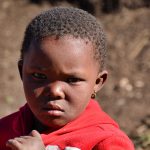
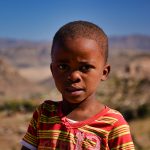
The situation in Lesotho is constantly improving, not only regarding the protection of children, but also economically. Nonetheless, the occurrence of AIDS/HIV and the decrease of economic resources have deeply affected Lesotho and this situation is also affecting children’s development.

Children’s Rights Index: 5,93 / 10
Black level : Very serious situation
Population: 2,1 million
Pop. ages 0-14: 32.47 %
Life expectancy: 54.37 years
Under-5 mortality rate: 57.53 ‰
Lesotho at a Glance
Lesotho is a small southern country with a population of 2 million people. The country is landlocked within South Africa. Lesotho’s economy is improving with an economic growth of 2.6 percent and its population is young, 38% of them being children under 18 years of age (UNICEF, 2018).
The main challenges the country faces are poverty and health issues. Apart from a slight reported improvement regarding the decrease in poverty in the last 15 years (World Bank, 2019), more than half of the population (around 51%) live in poverty, below the national poverty line of US$1.50 a day. In relation to health, the greatest challenge is still the high level of HIV/AIDS as well as tuberculosis. Indeed, with a prevalence of 25% in the adult population (15-49 years), it makes it the second highest in the world.
A brief overview of its early history could begin in the 19th century, when migrant Dutch farmers arrived to baSotho (known as Lesotho today) and were granted land thanks to a settlement under customary law. Despite a “treaty of friendship”, a Dutch group called Voortrekkers declared to be a separate republic in 1843. To fight back against the Voortrekkers, the king Moshoeshoe needed an association with the British. A protectorate was confirmed and formalised in 1868, after which the Basutoland was annexed into the Cape Colony.
All the events resulted in the Gun War of 1880, that began when the administration attempted to disarm the tribesmen. Then in 1884, Basutoland became a British colony (SAHO, 2020). Many years of violence, discrimination and profound disappointment were the result of these events shaping the early history of the country. Although the country became independent in 1966, it didn’t bring stability. Jonathan Leabua became the first Prime Minister and years of political battles and violence continued.
Status of Children’s Rights [1]
In 1992, Lesotho’s government ratified the Convention on the Rights of the Child (CRC), and since the 80s has been formulating more legislation and policies on children’s issues (Social Work and Society, 2018). For example, the Children’s Protection and Welfare Act of 2011 states most central child’s rights as addressed, at least within the law. It states the rights of a child and responsibilities of parents and the State as being: the Identity of a child, the Right to registration (also for orphans and vulnerable children), to live with parents in a caring environment, to education and health, to social activities, of the child with disabilities, the right to opinion, the right to be protected from exploitative labour and many more (Children’s Protection and Welfare Act, 2011).
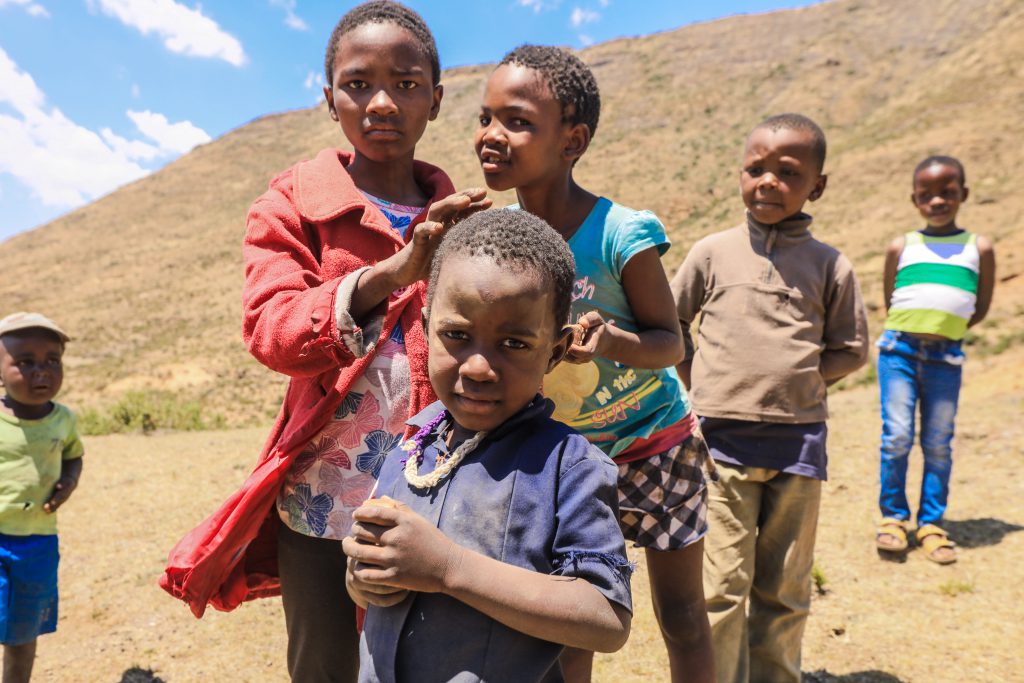
Despite much progress, children in Lesotho face many challenges concerning their rights. Some grave violations of child rights are often reported, they take the forms of child abuse as well as some harmful traditional practices (male circumcision, property disinheritance). Furthermore, it is reported that only 46% of children between 12 and 18 had a birth certificate in 2017. This can have a huge impact on their access to primordial services such as education and healthcare, and furthermore it will also later in their life in the future (World Vision, 2017).
Addressing the Needs of Children
The Right to Health
One of the biggest issues is how to provide high quality healthcare in such a small and landlocked nation. This type of geographical location does not help authorities to provide immediate care for children in an emergency or a regular medical check necessary for their development. This explains the decrease noticed in the children’s vaccination processes.
Lesotho’s government has taken initiative to improve maternal and child health, combating HIV/AIDS, malaria, tuberculosis and other diseases. Generally, these factors affect negatively children living in very poor conditions. This poverty leads to malnutrition and diseases related to lack of safe drinking water especially in rural areas. Lesotho is considered dangerous for pregnant women because of difficult access to proper healthcare. This is even more true in rural areas, where geographical, cultural and economic factors increase the lack of access to facilities. Indeed, a large number of urban living women get access to better services in comparison to those living in rural areas (James Lind Institute, 2019).
The primary cause of morbidity and mortality in children are pregnancy related complications. Lesotho’s government is acting on many different levels to improve the situation of its young citizens. It implemented the Lesotho Immunisation Expanded Programme and Integrated Management of Childhood Illness strategy. It is based on immunisation guidelines to fully vaccinate and take care of important causes of death among children (diarrhoea, acute respiratory infection (ARI), measles, malnutrition and anaemia).
Furthermore, Lesotho is the second most affected country by HIV. Mother to child transmission is as high. A survey reveals that 27.7 % of diagnosed pregnant women have discovered that their children are already infected with HIV. According to the Health and Social Welfare Ministry, among 55 000 infants born every year, 15 225 are HIV infected. Preventive measures are being taken by the Government of Lesotho to reduce HIV transmission but given the enormity of the problem, more should be done.
Right to Freedom of Opinion and Expression
According to Article 13 of the CRC:
“The child shall have the right to freedom of expression; this right shall include freedom to seek, receive and impart information and ideas of all kinds, regardless of frontiers, either orally, in writing or in print, in the form of art, or through any other media of the child’s choice.”
Lesotho’s statistics on freedom of expression and opinion are difficult to apply to children. For instance, the Afrobarometer (2018) showed that 74% of Basotho, main ethnic group in Lesotho, said they feel “somewhat” or “completely” free to say what they want (Afrobarometer, 2018). Although these statistics do not apply specifically to children that are subject to custom respect and elderly traditional and structural obligations. Certain practices and customs can restrict the application of the children’s freedom of opinion and expression. This is the case of young girls that do not have the right to give their opinion in the decision making.
In addition, the legal court system does not take children’s testimonies very seriously. It appears that children are not respected and that this situation is aggravated by the gaps in the implementation of the rights of the children stating that children should be listened to. It’s therefore necessary to encourage and respect child freedom of opinion in Lesotho -especially young girls – in schools, within families, and the health and judicial system, and to promote the right of children to participate.
The Ministry of Information and Broadcasting participated in a SADC Summit where Member States were encouraged to adopt policies and programmes for the development of child’s right to freedom of expression. The Day of the African Child is also a moment where child’s rights are vividly celebrated, children can enjoy their freedom of expression through music, games, poetry and they also participate to a mock parliament, in front of real parliamentarians (United Nations, 1998)
Right to Education
The Education Bill 2009 puts compulsory education at primary level into law. The Bill states the roles and responsibilities of persons and institutions. Furthermore, it assures the welfare of children and, more importantly, abolished (within the law) corporal punishment in schools (LCN, 2009). Primary education is free since Lesotho’s government put in place a system allowing all children to attend school. Lesotho’s enrolment ratio is high, as it has shown a net enrolment in lower education increased from 82% to 95% between 2000 and 2010.
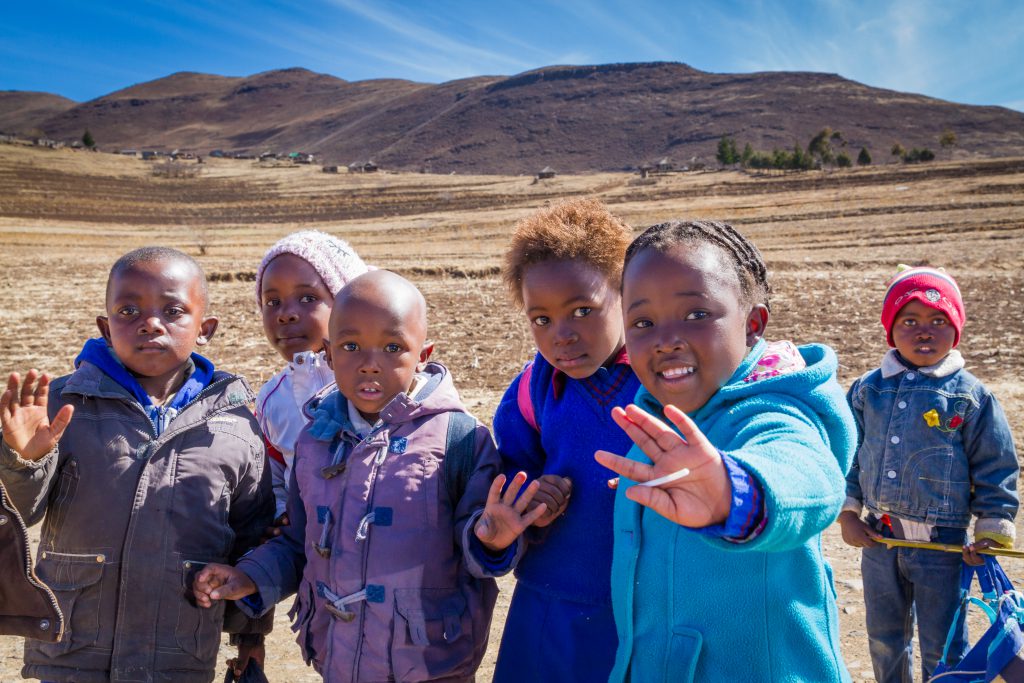
In 2014, the gross enrolment ratio in grade 1 was 98% (Global Partnership, 2020). The Government is investing around 23% of the recurrent budget in the education sector, which is 9.2% of the national GDP. Although, it is considered by certain studies done in 2015 on education that many challenges have not been achieved since there is still presence of poor retention rates at primary and secondary levels, low student learning outcomes/achievements, graduates with inadequate skills for the job market, high inefficiency in the system, HIV and AIDS, and poor school governance.
Unfortunately, rural areas are more affected, at least 20% of rural children seemed to not be attending school. This is also due to early marriages, child labour and child headed families (because of the HIV/AIDS pandemic).One of the reasons is also the fact that extreme poverty forces many parents to send their children to work in order to help themselves instead of sending them to school.
Regarding the general state of education, there is a shortage of qualified teachers, deficient infrastructure, and a lack of manuals. In addition, schools are overcrowded; a situation that does not encourage a good education and leads to many dropouts and grade repeats. In fact, young girls who become pregnant during school terms are usually excluded from their school. Such a measure is not only discriminatory towards young girls but also in violation of their right to education.
Right to Non-Discrimination
Customary Law plays an important role in preventing discrimination. Indeed, some beliefs or traditions can limit women to access specific social areas. Other forms of discrimination can affect women and girls, such as gender-based violence (GBV), the high prevalence of HIV/AIDS among women and girls as well as the unequal participation of women in the decision making process.
Since 2000, a number of laws have been passed to improve this situation: he Sexual Offences Act 2003, the Legal Capacity of Married Persons Act 2006 which promotes economic rights of women, the Gender and Development Policy of 2003 making GBV a priority area, the National GBV Action Plan of 2008 and, between 2013 and 2017, the National Action Plan on Women, Girls and HIV which gives a framework for the protection of women and girls with HIV in the context of gender-based violence (Universal Periodic Review, 2013).
Cases of discrimination persist against Mosotho women (women from Lesotho) when they pass their citizenship to their spouses. The Citizenship Order, for instance, discriminates against Mosotho women by not giving them the same rights as Mosotho men to pass on their nationality to their spouses. This violates Lesotho’s constitutional obligations as well as its international ones regarding the CEDAW (Convention on the Elimination of All Forms of Discrimination Against Women). Furthermore, it increases the probability of creating a situation of statelessness for the child if the child’s mother passes away and the father is stateless, from an unknown nationality, or a foreigner who is unable to pass on his nationality to his child (Committee on the Rights of the Child, 2017).
According to the Committee on the Right of Child, Lesotho also needs to address concerns around birth regulation, to ensure the newborn children are immediately registered. The regulation on registration is essential in particular for children born in rural areas, including for the indigenous populations but also for children that were not born in hospitals. To do so, it is important to provide free birth registration for those unable to pay for it.
Although the principle of non-discrimination is established in Lesotho’s Constitution, discrimination continues to affect the rights of children, especially young girls. Other victims of discrimination are children born out of wedlock which causes problems among families. Most of these children – particularly those from poor families – have no access to education or healthcare. This can be explained by the humiliations faced by their mothers when they try to obtain paperwork for their children.
Risk factors → Country-specific challenges
Child Labour and Modern Slavery
In Lesotho, compulsory education age is below the minimum age for work and for this reason children in between these ages are vulnerable to child labour. Moderate efforts were made to combat child labour and worst forms of child labour. For instance, the Ministry of Labor and Employment employed labour inspectors to manage a Child Labor Desk within the Ministry. Despite these efforts, children are engaged in all sorts of terrible labour such as: animal herding, domestic work, commercial sexual exploitation, all of these sometimes being the result of human trafficking (U.S Department of Labor, 2018)
The ILO estimated in 1999 that 21% of children between the ages of 10 and 14 were working. A survey from 1997 demonstrated that boys were more likely to work than girls, and that child labour was mainly found in rural areas. The National University of Lesotho and UNICEF stated that girls in rural areas were found to be working as servants or in the commercial sex industry. Urban children usually worked in car washers, selling newspapers, carrying luggage and others (Refworld, 2001)
Due to the high level of HIV among adults, many children often become orphans. This situation can force them to start working from an early age. Many orphan children with HIV become poor and migrate to the south, from rural to urban areas to engage in commercial sexual exploitation. Furthermore, children with disabilities are also very vulnerable since they face great difficulties accessing education because of ill-equipped facilities and untrained teachers (Government of Lesotho, 2019).
Poverty
The biggest threats that have been identified for the protection and development of children in Lesotho are poverty and food insecurity, together with HIV. The reason is that these three elements constrain the ability of households to take care of themselves (USAID, 2013).
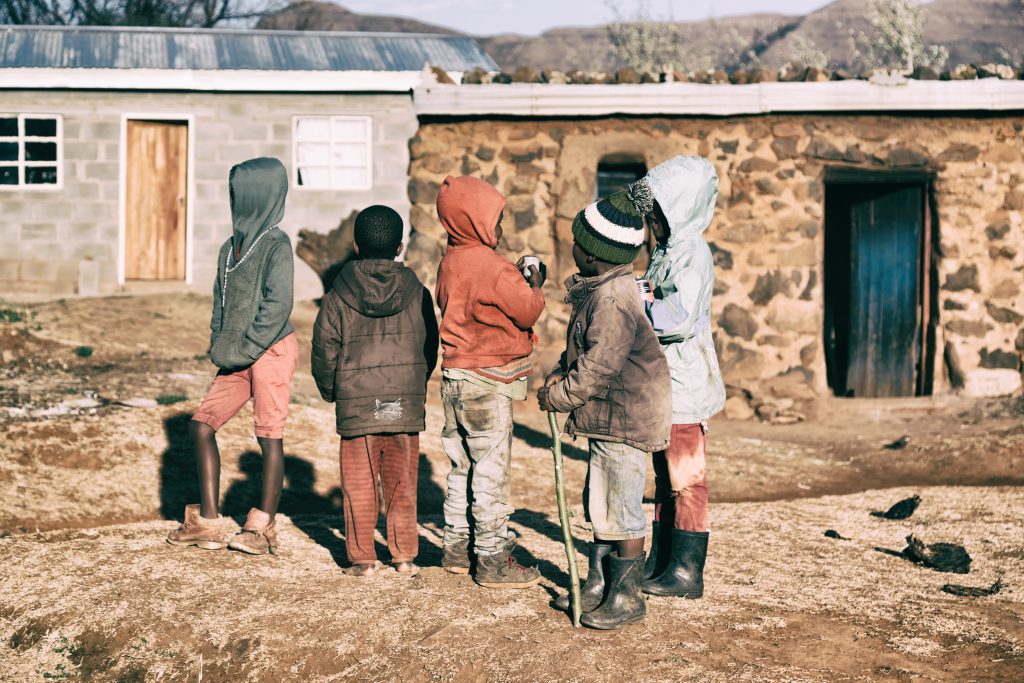
Although poverty has been declining over the last 15 years, poverty and inequality have remained persistent and high. The Lesotho Poverty Assessment: Progress and Challenges in Reducing Poverty reported that poverty fell from 56.6% to 49.7% between 2002 and 2017. Economic vulnerability is still very present and more than 75% of the population is either poor or vulnerable to poverty (World Bank, 2019). As we noted previously, rural areas are more vulnerable, and poverty decreased there marginally from 61.3% to 60.7%.
In urban areas, the changes are more significant, from 41.5% to 28.5%. Indeed, urban areas have experienced greater poverty reduction. Moreover, agriculture is at the heart of Lesotho’s development issues. This industry only contributes to 17% of the total GDP.
In rural areas, agriculture is the primary means of making a living but arable lands are difficult to access for the majority of people. It was estimated that 10% of Lesotho’s land is suitable for agriculture (Borgen Magazine, 2019) Because unemployment rates are high, migration to urban areas is very common while others also leave for South Africa to find employment. An estimated 50% of the population is currently unemployed.
Justice for Children
Lesotho is a dualist state, meaning that international treaties are not part of national law until they have been domesticated by an Act of Parliament. For this reason, the CRC cannot be enforced directly; therefore, children would only be protected by the laws inspired by the Convention such as the Children’s Protection and Welfare Act (CPWA).
In 2014, there was at least one case referring to the CRC. The High Court of Lesotho stated:
“[the] content and form of the CPWA should be perceived against the background of the 1989 United Nations Convention on the Rights of the Child (CRC), the 1990 African Charter on the Rights & Welfare of the Child (ACRWC), other international instruments, protocols, standards and rules on the protection and welfare of children to which Lesotho is a signatory”
(White and Case, 2014)
Based on the CRC, it would be recommended that Lesotho treat children under 18 years of age as children and not adults. The CRC states that children should be treated taking into account their welfare and their age. Therefore, a person under 18 should be treated by the juvenile system. In 2001, under Lesotho’s law, the age of criminal responsibility was very low, seven years to be precise (Lydia Ntlatlapa Makhahliso, 2009).
Child Marriage
According to the Marriage Act of 1974, marriage is only possible at the age of 21 for both men and women. Unfortunately, with permission of the minister girls can marry at age 16 and boys at 18. A UN report from 2015 states that one out of five girls in Lesotho are married before they turn 18 years old. This report also shows that at least 2% of boys marry at age 15 and 19% before they turn 18 years old (World Vision, 2016).
Two main factors are said to be at the origin of child marriage practice. The traditional customs that come from cultural practices and take precedence over formal legislation. Second reason is the limited awareness on this issue. Indeed, because of their lack of knowledge about what is right, children are forced into marriages. To tackle this problem at least slightly, parents should have open lines of communication with their children (Girls not Brides, 2017).
In Lesotho, Her Majesty Masenate Mohato Seeiso, Queen of Lesotho is considered an advocate of children’s rights. For instance, she has declared:
“Let us all protect children against all forms of abuse, including early marriage and ensure that legal action is taken against perpetrators of early marriage. We all have a responsibility to ensure that laws protecting children are implemented.”
Under the Ministerial Commitment on comprehensive sexuality education and sexual and reproductive health services for adolescents and young people in Eastern and Southern Africa, Lesotho is one of 20 countries which has committed to end child marriage by the end of 2020.
Child Maltreatment
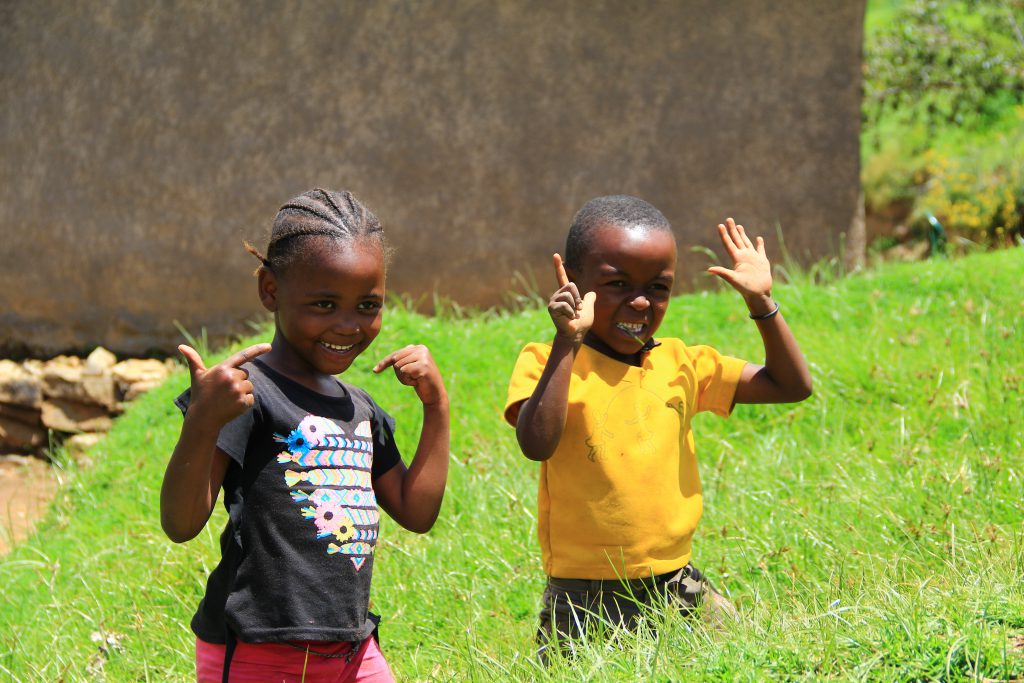
According to UNICEF, violence against children can be defined as: “all forms of physical or psychological abuse, injury, neglect or negligent treatment, maltreatment or exploitation, including sexual abuse”. A study of 2011 revealed that in Lesotho, a total of 5.8% of all households with children had at least one child who had been subject to violence during the year of 2010. This data included: 4.6% of physical violence, 1.1% of sexual violence and 0.1 of physical and sexual violence.
In the same study it was stated that there was a high rate of child sexual abuse, around 10,000 cases or 2-3% of all households (USAID, 2013). The main kind of violence reported were physical and sexual abuse, corporal punishment, emotional and psychological abuse as well as discrimination against orphans living with HIV. In 2005, the Child and Gender Protection Unit noted that out of 668 cases reported, 340 (51%) were sexual offences, and out of these, 166 cases involved children under the age of 18.
This violence are also found in schools where sexual violence is present, between students and from teachers against learners. Furthermore, physical violence against children such as beating, is very common, sometimes because of customs and sometimes driven by poverty and hunger. Female and male mutilation is also present in the country, but not many coherent statistics are easy to find to illustrate these practices in numbers. However, many media stories and reports mention Lesotho as a country where genital mutilation is unfortunately practiced.
Written by Adrian Lakrichi
Last updated on 8 August 2020
Bibliography:
WORLD VISION, (2019), Child Protection.
STATE OF LESOTHO, (2011), Children Protection and Welfare Act.
FRANCO, Frescura, (2020), Lesotho, South African History Online.
UNICEF, (2018), Country Office Annual Report 2018.
WORLD BANK, (2020), The World Bank in Lesotho.
HAMILTON COBBE, James, (2020), Lesotho, Encyclopedia Britannica.
JAMES LIND INSTITUTE, (2014) Maternal and Child Health in Lesotho.
LESOTHO COUNCIL OF NON-GOVERNMENTAL ORGANISATIONS (LCN), (2009), Joint UPR submission.
GLOBAL PARTNERSHIP FOR EDUCATION, (2020), Lesotho.
U.S DEPARTMENT OF LABOUR, (2018), Child Labor and Forced Labor Reports.
GOVERNMENT OF LESOTHO, (2019), FAO urges all to address child labour.
WHITE AND CASE LLP, (2014), Access to justice for children: Lesotho.
GIRLS NOT BRIDES, (2017), Lesotho.
[1] This article by no means purports to give a full or representative account of children’s rights in Lesotho; indeed, one of the many challenges is the scant updated information on Lesotho children, much of which is unreliable, not representative, outdated or simply non-existent.

